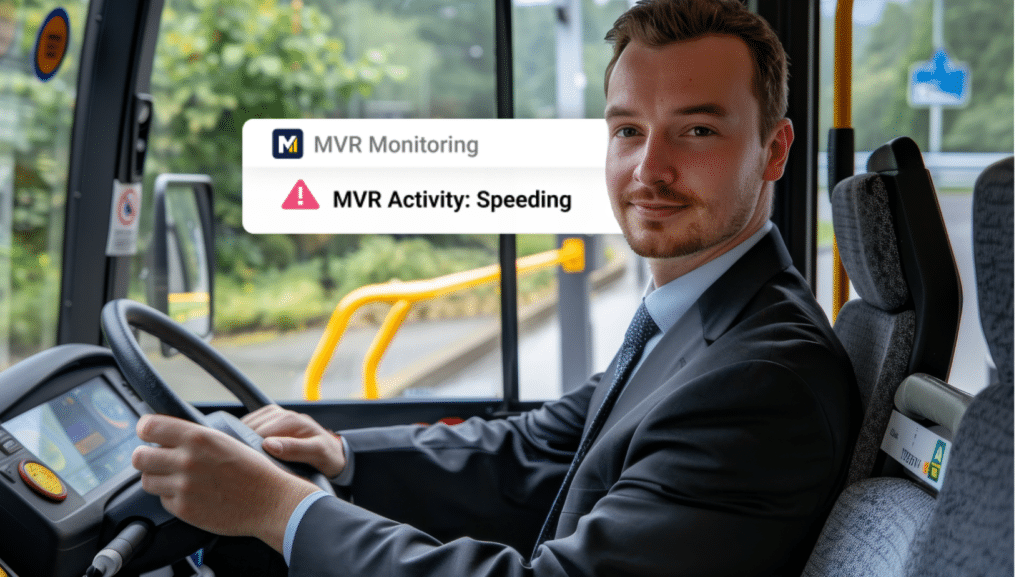5 Strategies to Improve Fleet Driver Safety

If you hire or manage drivers, you’ve probably experienced that moment of dread—a crash report, a failed audit, or an unexpected license suspension or violation.
These events rarely come out of nowhere. The warning signs are there, but spotting them early requires better tools and smarter strategies.
Here are five proven ways to improve fleet driver safety and reduce the risks that could threaten your drivers and bottom line.
1. Monitor Driving Records Regularly—Not Just Once a Year
Pulling MVRs just once a year is still the norm for many companies, but that’s far from enough to keep your fleet safe.
A lot can happen in 12 months. A driver could rack up violations, get their license suspended, or even be involved in a DUI just weeks after passing their annual check. By the time you discover it, you could already be exposed to serious safety, legal, and financial consequences.
To truly stay ahead of risk and take control of your fleet driver safety, it’s important to move beyond one-and-done checks. Reviewing records more frequently, or better yet, using continuous MVR monitoring, gives you near real-time visibility into driver behavior. If a violation or suspension happens, you’ll know immediately and can step in before it becomes a serious problem.
2. Set Clear Expectations with a Strong Safety Policy
You can’t enforce what isn’t clear. Drivers must know what’s expected of them on and off the road.
A comprehensive fleet safety policy protects your company from accidents and liability and gives drivers a consistent framework to follow. It also outlines disciplinary actions for unsafe behavior, expectations for reporting incidents, and requirements for licensing, rest, and vehicle inspections.
Reinforce policies during onboarding, annual reviews, and during corrective coaching sessions. Drivers who understand the rules are more likely to follow them, and help you reduce fleet risks across the board.
3. Make Driver Training Ongoing and Relevant
Even your best drivers can slip into bad habits without regular reminders. That’s why ongoing, personalized training is key to improving fleet driver safety.
The most effective training is based on real data. A driver with speeding violations shouldn’t get the same course as someone who’s had distracted driving issues. Tailoring training to what each driver makes it more effective in addressing risky behavior.
Delivering timely, focused training not only corrects issues faster but also helps drivers keep their records clean.
4. Take Driver Fatigue Seriously
Driver fatigue is a real fleet risk, and it’s more common than many think. Long shifts, overnight routes, and tight deadlines can all contribute.
Develop a fatigue management policy that promotes open communication. Encourage drivers to report fatigue without fear of losing hours. Enforce HOS regulations, use ELD data to monitor drive time, and provide fatigue training during onboarding and refresher sessions.
5. Build a Strong Culture of Safety and Fleet Risk Awareness
The most powerful tool in fleet risk management? Your people.
Drivers who feel empowered, supported, and appreciated are more likely to take ownership of their performance and speak up about safety concerns. In contrast, disengaged drivers are more likely to cut corners, stay quiet about problems, and resist training.
Creating a safety-first culture takes effort but pays off in better performance, fewer incidents, and stronger team morale.
Bonus: Let Technology Do the Heavy Lifting

Even the best safety plans can fall short if they’re buried in spreadsheets or scattered across systems. Manually juggling driver files, MVRs, training schedules, and compliance deadlines isn’t just exhausting; it’s risky.
That’s why smart fleets turn to technology. The right tools can simplify how you manage fleet driver safety, reduce manual tasks, and give you real-time visibility into risk.
Not sure where to start? Explore how our Driver Risk Management Solutions can help you simplify compliance, reduce risk, and free up time to focus on what matters most.
*We are not lawyers. Consult with your legal counsel to ensure your processes and procedures meet/ or exceed safety standards and compliance regulations. Please read our legal disclaimer.
